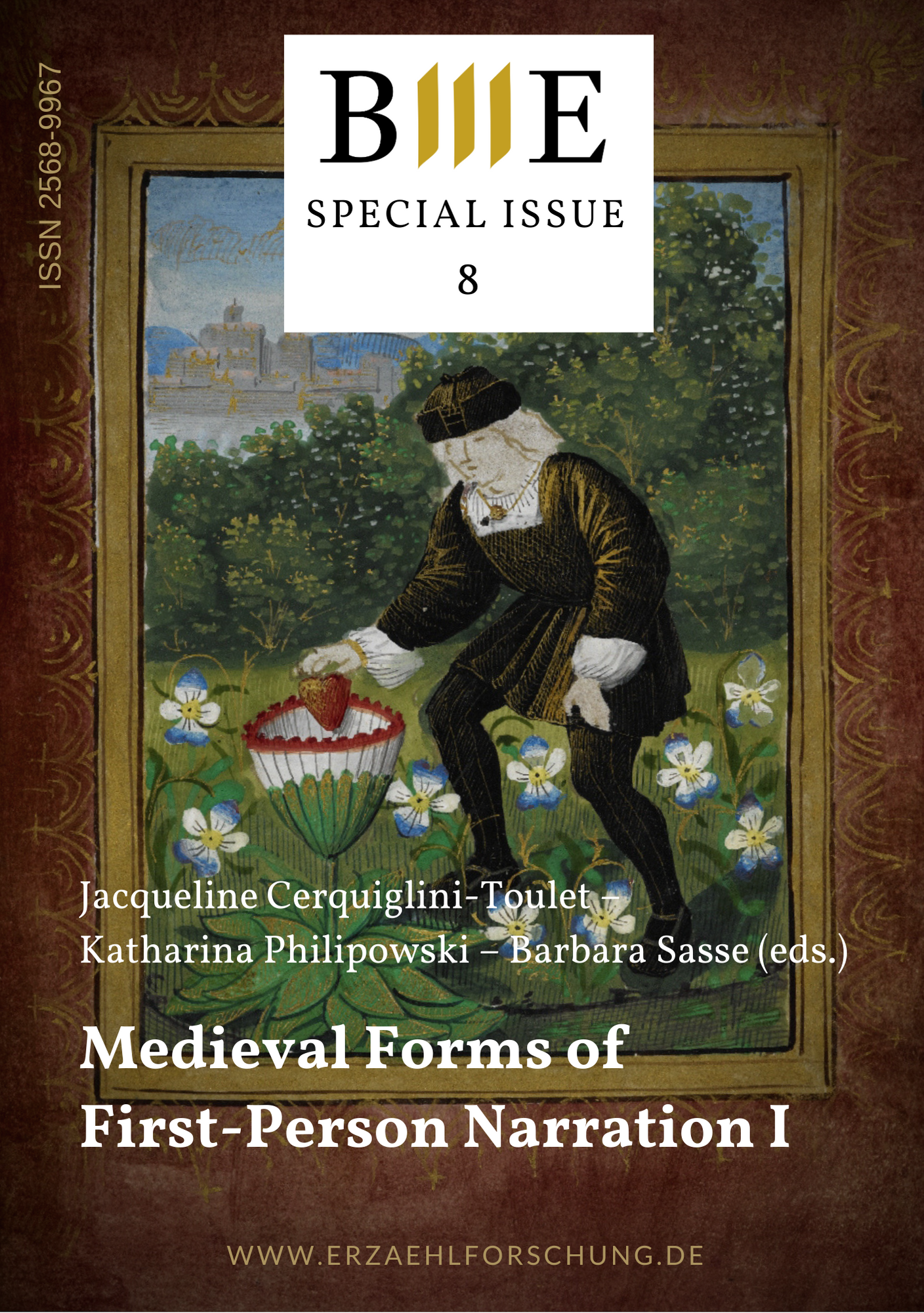Récit à la première personne, autographie, autobiographie
DOI:
https://doi.org/10.25619/BmE20203159Abstract
In the 13th century, two major works employed the ‹I› as a narrative device. They put forth two types of texts which would serve as templates for authors of first-person narratives: the dream and the quest. In this period, another type of narrative text also appeared in French which was characterized by the presence of an ‹I›: the ‹dit›. What does this ‹I› represent? The ‹dits› analyzed here can be divided into two broad categories: the love ‹dits› (Guillaume de Machaut, Jean Froissart, and Christine de Pizan) and the ‹dits› in which the theme is no longer the conquest of the love object but the quest for knowledge (Christine de Pizan). We can locate a foreshadowing of these two templates in the ‹Roman de la Rose› in the transitional passage from one to the other of its two parts. The analysis describes a typology distinguishing the open-ended ‹I› from the ‹I› characterized by the fact that it leads to questions regarding the ‹I› as a figure of literary authority around two essential concepts: experience and sentiment. It concludes by examining the inflection taken by the ‹I› when a shift occurs from the love of love to the love of knowledge.
Downloads
Veröffentlicht
Ausgabe
Rubrik
Lizenz
Copyright (c) 2020 Jacqueline Cerquiglini-Toulet

Dieses Werk steht unter der Lizenz Creative Commons Namensnennung - Nicht-kommerziell - Keine Bearbeitungen 4.0 International.





